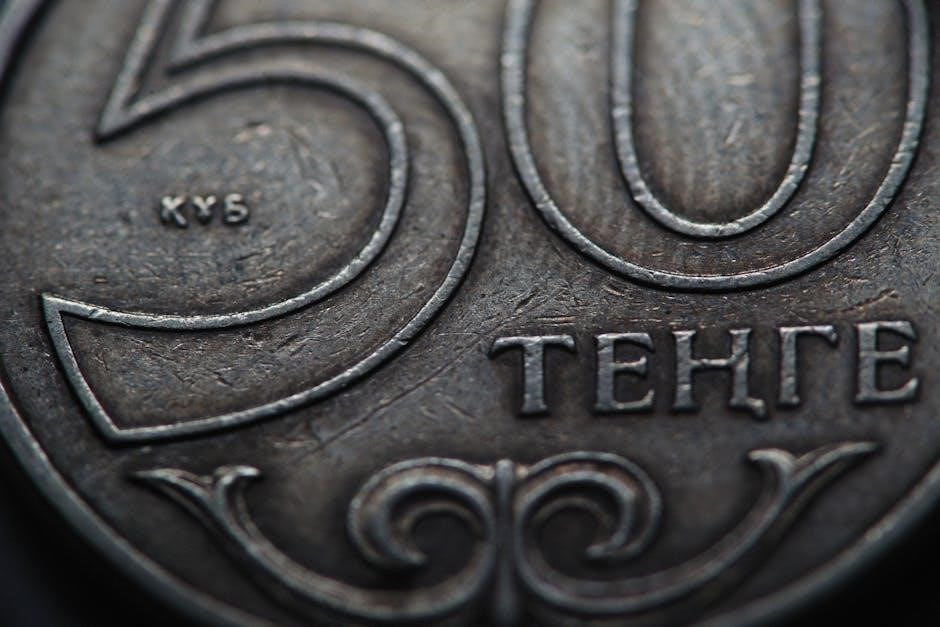Australian coin collecting is a fascinating hobby, with resources like David Miller’s book and comprehensive PDF catalogs offering detailed insights into the country’s rich numismatic history. Downloadable checklists and guides, such as the Commemorative 2 Coin Checklist, provide collectors with valuable tools to track and identify rare and unique coins, making it easier to start or expand a collection.
Why Collect Australian Coins?
Collecting Australian coins offers a unique blend of history, art, and investment potential. With a rich numismatic heritage, Australian coins feature iconic designs like kangaroos, koalas, and the Commonwealth Coat of Arms, making them visually appealing. Rare and error coins, such as the 2000 $1 mule or the 2016 5-cent coin, add an element of excitement for collectors. Additionally, the limited mintage of certain commemorative coins, such as those marking the 100th anniversary of the Australian Open, makes them highly sought after. For many, collecting is not just about monetary value but also about preserving history and connecting with Australia’s cultural identity. The availability of detailed checklists, catalogs, and PDF guides simplifies the process, making it accessible for both new and experienced collectors to build meaningful collections.
Brief History of Australian Coinage
Australia’s coinage history began with the introduction of British currency in the early 19th century. The first official Australian coins were minted in 1910, featuring the Commonwealth Coat of Arms. The transition to decimal currency in 1966 marked a significant milestone, introducing the dollar and cent system. Since then, the Royal Australian Mint and the Perth Mint have produced iconic coins, including commemorative issues celebrating events like the 1988 Bicentenary and the 100th anniversary of the Australian Open. Today, Australian coins are renowned for their innovative designs and high-quality production, making them popular among global collectors. Historical checklists and PDF guides provide detailed records of these coins, allowing collectors to trace the evolution of Australian numismatics from its colonial roots to modern times.

Types of Australian Coins
Australian coins include circulating, commemorative, and collector coins. Circulating coins are used daily, while commemorative coins honor events. Collector coins feature unique designs and limited editions, appealing to enthusiasts worldwide.
Circulating Coins
Circulating Australian coins are a staple in daily transactions, featuring denominations from 5 cents to 2 dollars. The Royal Australian Mint produces these coins, which include iconic designs like the kangaroo and platypus. Notably, the 2016 5-cent coin is highly sought after due to its limited mintage, while the 2000 1-dollar coin is prized for its unique double-struck error. These coins often enter circulation through banks and are used widely across the country. Collectors should examine common circulating coins for rare variations, as some, like the 2000 1-dollar coin, can fetch thousands. Regularly updated lists and PDF guides help enthusiasts track these coins and their potential value. Circulating coins remain a cornerstone of Australian numismatics, blending practical use with collectible appeal.
Commemorative Coins
Australian commemorative coins honor significant events and cultural icons, such as the 100th anniversary of the women’s tennis championship and the introduction of the honey bee. These coins, often featuring unique designs, are released in limited quantities by the Royal Australian Mint. The 2023 coin celebrating Margaret Molesworth and the 2020 honey bee coin are notable examples. Collectors can download free PDF checklists to track these releases, with updates ensuring they stay informed about the latest issues. Commemorative coins serve as both historical markers and valuable additions to collections, offering a blend of artistic design and collectible appeal that resonates with numismatists and history enthusiasts alike.
Collector Coins
Australian collector coins are highly sought after for their unique designs and limited mintage, making them valuable additions to any collection. Coins like the 2016 5-cent coin, with only 5,000 struck, and the 2000 1-dollar coin featuring a significant error, are rare finds. These coins often commemorate events or themes, such as the 25th anniversary of Parliament House with a triangular silver 5-dollar coin. Collector coins are typically released in mint sets or as special editions, appealing to both new and experienced collectors. Resources like PDF checklists and catalogs help enthusiasts track and identify these coins, ensuring they don’t miss out on rare opportunities. Their historical and artistic significance, combined with their potential investment value, make collector coins a cornerstone of Australian numismatics.
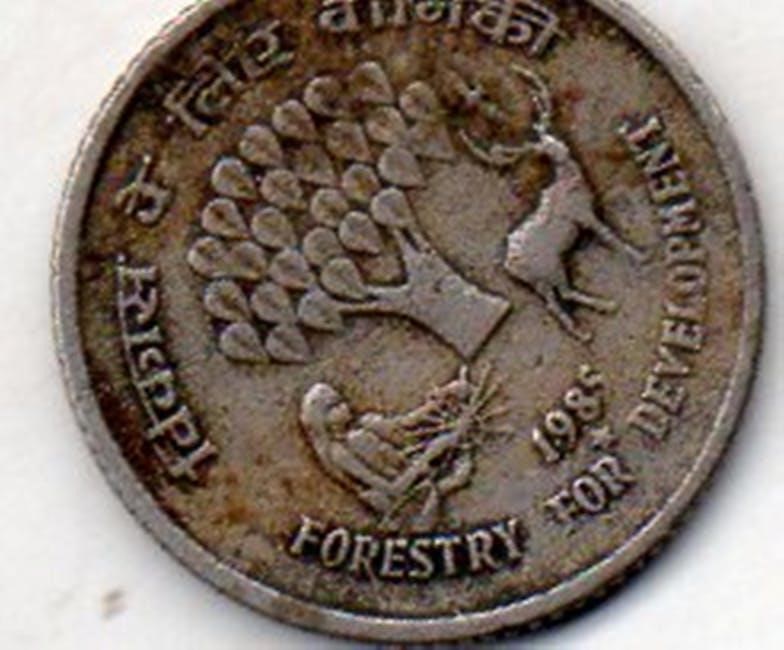
Rare and Error Coins in Australia
Australia boasts rare coins like the 2016 5-cent and 2000 1-dollar error, with values up to $3,000. Limited mintage and unique flaws make these coins highly sought after.
Notable Rare Australian Coins
Australia’s numismatic history features several standout rare coins, such as the 2016 5-cent coin struck at the Perth Mint, with only 5,000 in circulation, making it highly sought after. The 2000 1-dollar coin, known for its significant error, can fetch up to $3,000 among collectors. Another notable example is the 1930 Penny, one of the rarest Australian coins, with only 1,500 minted. Additionally, the 1923 Halfpenny and 1919 Kookaburra Penny are highly prized due to their limited production and historical significance. These coins, often highlighted in collector guides and PDF checklists, showcase Australia’s rich numismatic diversity and attract both novice and seasoned collectors.
Common Errors in Australian Coins
Australian coins often feature unique errors that enhance their collectible value. Common errors include off-center strikes, double strikes, and misaligned dies, which occur during the minting process. For instance, the 2000 1-cent coin with a significant error can fetch up to $3,000. Other notable errors include mismatched dies and coins struck on incorrect metal blanks. These mistakes, though rare, make the coins highly sought after by collectors. Coin enthusiasts are encouraged to examine their collections carefully, as such errors can significantly increase a coin’s value. Resources like the Australian Coin Collection List PDF provide detailed insights into identifying these errors, helping collectors spot rare and valuable pieces in their own collections.
How to Identify Rare Australian Coins
Identifying rare Australian coins requires a combination of research and attention to detail. Collectors can utilize resources like the Australian Coin Collection List PDF, which provides detailed mintage information and error identification guides. Key factors to look for include low mintage numbers, unique errors, and historical significance. For example, the 2016 5-cent coin, with only 5,000 minted, is highly sought after. Additionally, coins with striking errors, such as double strikes or off-center designs, can significantly increase their value. Using catalogs and checklists, collectors can cross-reference their finds with known rare coins. Professional grading services can also help verify the authenticity and condition of rare coins, ensuring their value is accurately assessed. By leveraging these tools, collectors can identify and authenticate rare Australian coins effectively.
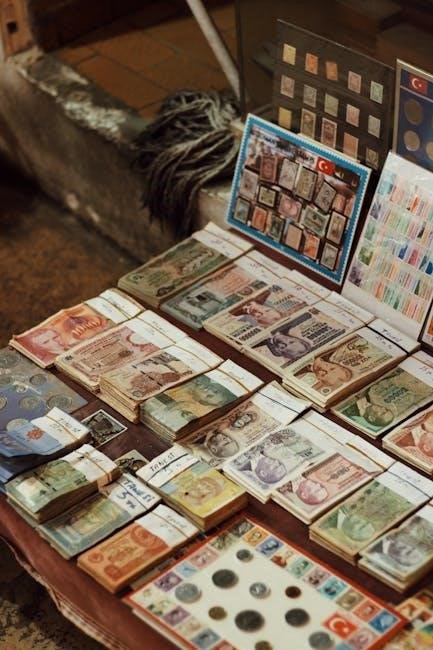
Australian Coin Collection Resources
Downloadable PDF checklists and catalogs provide detailed mintage info, historical insights, and market prices, essential for identifying and managing Australian coin collections effectively online.
Checklist and PDF Downloads
Collectors can access comprehensive PDF checklists and catalogs to track Australian coins, including circulating, commemorative, and rare issues. These downloadable resources provide detailed mintage information, historical context, and current market values, aiding collectors in identifying and managing their collections. For instance, the Commemorative 2 Coin Checklist, updated in 2025, offers a detailed list of colored $2 coins, helping enthusiasts keep track of rare and unique pieces. Additionally, resources like the Australian Coin Collection Value Guide and Rare Australian Coins List are available for free download, covering coins from 1920 to 2020. These tools are essential for both new and experienced collectors, ensuring they stay informed and organized in their numismatic pursuits.
Catalogs for Australian Coins
Comprehensive catalogs are indispensable for Australian coin collectors, offering detailed listings of coins, their history, and current market values. The Full Color Illustrated Australia Coins Catalog, spanning 644 pages, lists over 5,850 coins with high-quality images, making it a valuable reference. These catalogs, available in PDF format, cover circulating coins, commemorative issues, and rare collectibles. They also highlight notable errors and variations, such as the 2016 5-cent coin and the 2000 1-cent coin, which are highly sought after by collectors. Regular updates ensure accuracy, reflecting changing market trends and new releases. Whether you’re a seasoned collector or just starting, these catalogs provide essential insights to build and maintain a well-rounded Australian coin collection.
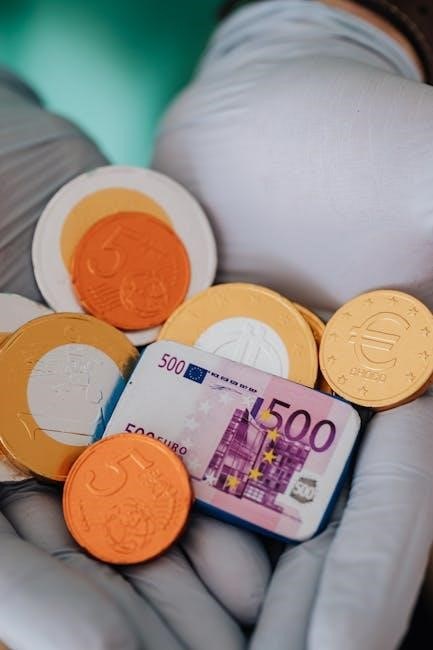
Tools and References for Collectors

Essential tools for Australian coin collecting include magnifying glasses, coin sorters, and high-quality catalogs. References like PDF checklists and detailed coin histories aid collectors in identifying rare coins and managing their collections effectively, ensuring accuracy and organization.
Essential Tools for Coin Collecting
Coin collecting requires specific tools to maintain and organize your collection effectively. A high-quality magnifying glass or loupe is essential for examining coin details and identifying rare variations. Soft, clean gloves prevent oils from your skin from tarnishing the coins. A coin album or folder provides safe storage and display, while a coin scale helps verify authenticity. Reference materials, such as catalogs and PDF guides, are indispensable for identifying and valuing coins. Additionally, coin cleaning solutions and protective sleeves ensure long-term preservation. For advanced collectors, coin sorting tools and digital software can streamline collection management. These tools collectively enhance the hobby, making it both enjoyable and rewarding for collectors of Australian coins.
Key Reference Materials
Key reference materials are crucial for Australian coin collectors to accurately identify, value, and organize their collections. The Australian Coin Catalogue, available in PDF format, provides detailed descriptions and high-quality images of over 5,850 coins, covering both circulating and commemorative issues. Additionally, the Commemorative 2 Coin Checklist is a valuable resource for tracking special edition coins. Rare coin lists document historical variations and errors, offering insights into their estimated values. Online platforms like the Royal Australian Mint and numismatic forums also provide updated market trends and collector guides. These resources ensure collectors stay informed, making informed decisions and enhancing their collecting experience. Regular updates and free downloads make these materials accessible to both new and experienced collectors.
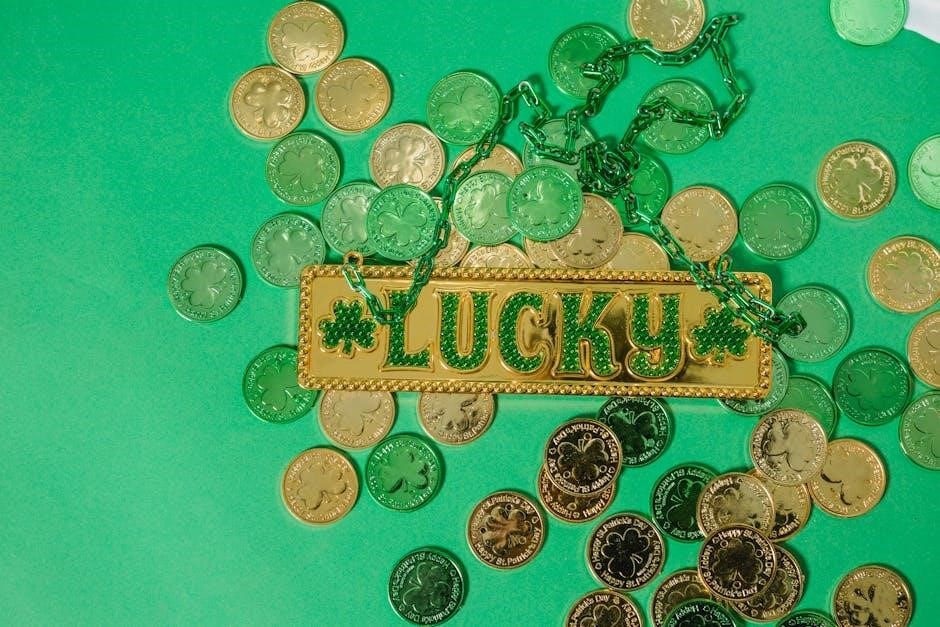
Investment Potential of Australian Coins
Australian coins offer promising investment opportunities, especially rare and error coins, which can significantly appreciate in value. High-demand collectibles, like limited-edition commemoratives, attract serious investors seeking tangible assets.
Coins as Investment Assets
Australian coins are increasingly viewed as valuable investment assets due to their rarity, historical significance, and potential for appreciation. Rare coins, such as the 2000 1-cent coin with errors, can fetch thousands of dollars, making them attractive to serious collectors and investors. Limited mintage issues, like the 2016 5-cent coin, also hold strong investment potential. The condition and uniqueness of a coin play a crucial role in determining its value. Market demand for commemorative and error coins continues to rise, driven by numismatic enthusiasts. Investors are drawn to coins as tangible assets with cultural and historical appeal. However, success requires careful research and an understanding of market trends. Utilizing resources like checklists and catalogs can help identify coins with strong investment potential, ensuring informed decisions for those diversifying their portfolios with Australian coins.
Market Trends in Collectible Coins
The market for collectible Australian coins is thriving, driven by limited edition releases and growing enthusiast interest. Recent trends highlight strong demand for error coins, such as the 2000 1-cent coin, which can fetch up to $3,000. Themed releases, like the 2025 coin commemorating 200 years since the introduction of bees to Australia, attract both collectors and investors. Commemorative coins, such as those celebrating the Australian Open’s 100th anniversary, also gain significant attention. Rare coins, such as the 2016 5-cent coin with low mintage, are highly sought after. Auctions and online platforms report increasing activity, with rare and error coins leading sales. Collectors are advised to stay informed about mintage numbers and market demand to make informed purchases, ensuring they capitalize on emerging trends in the dynamic world of Australian numismatics.

Maintenance and Care of Coin Collections
Proper handling, storage, and cleaning are essential for preserving Australian coins. Use gloves to prevent oil transfer, store in protective albums, and avoid harsh chemicals to maintain their condition.
Best Practices for Storing Coins
Proper storage is crucial to maintain the condition and value of Australian coins. Use high-quality coin albums or folders with acid-free materials to prevent damage. Store coins in a cool, dry environment, avoiding direct sunlight and humidity. Consider using protective capsules or sleeves for rare or valuable coins. Handle coins gently, preferably with clean, dry gloves to avoid transferring oils from your skin. Avoid stacking coins, as this can cause scratching or abrasions. Regularly inspect stored coins for signs of deterioration. For long-term preservation, consider airtight containers or safes. Organize coins by type, year, or denomination for easy access and cataloging. Refer to resources like the Australian Coin Collection List PDF for additional tips on storage and maintenance.
Cleaning and Preservation Tips
Proper cleaning and preservation are essential to maintain the value and condition of Australian coins. Avoid harsh chemicals or abrasive materials, as they can damage the coin’s surface. For delicate cleaning, use a mild soap solution with distilled water and a soft-bristle toothbrush. Never rub coins vigorously, as this can cause scratches. Handle coins with clean, dry gloves to prevent oil transfer from your skin. Store coins in acid-free sleeves or protective capsules to prevent tarnish and corrosion. Avoid exposing coins to high humidity or direct sunlight, which can lead to deterioration. Regularly inspect coins for signs of wear or damage. For rare or valuable coins, consider professional conservation. Always dry coins thoroughly after cleaning to prevent water spots. By following these tips, you can ensure your Australian coin collection remains in pristine condition for years to come.
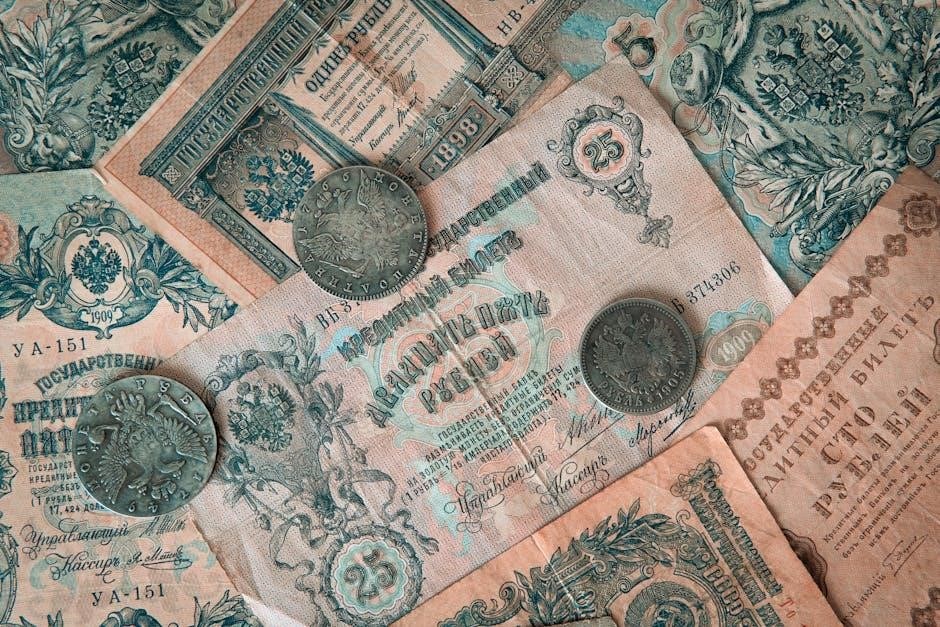
Auctions and Market Trends
Auctions for Australian coins are thriving, with major houses like Roxbury’s Auction House offering rare collections worth millions. Market trends show growing demand for unique and error coins, such as the 2016 5-cent coin, which is highly sought after by collectors. Experts like Joel Kandiah highlight the importance of monitoring market fluctuations to maximize collection value. Online platforms and catalogs provide insights into current prices and mintage details, helping collectors make informed decisions. The market’s dynamic nature ensures that Australian coins remain a valuable and rewarding investment opportunity.
Major Auction Houses for Australian Coins
Major auction houses play a crucial role in the Australian coin market, connecting collectors with rare and valuable coins. Roxbury’s Auction House is a prominent name, offering significant collections, such as the 3000-lot collection worth $2.5 million. The Royal Australian Mint also participates in auctions, featuring limited-edition and commemorative coins. These platforms provide transparency and credibility, ensuring fair market values. Notable sales include rare coins like the 2016 5-cent coin and unique error coins, which attract high demand. Auctions are essential for setting market trends and facilitating the trade of collectible Australian coins. Collectors rely on these houses to discover and acquire rare numismatic treasures, making them indispensable in the hobby.
Understanding Market Demand
Understanding market demand is crucial for Australian coin collectors, as it drives the value and desirability of coins. Recent trends show high interest in error coins, such as the 2000 1-cent coin, which can fetch up to $3,000. Limited mintage coins, like the 2016 5-cent coin with only 5,000 issued, are highly sought after. Commemorative coins, such as those celebrating the 100th anniversary of the Australian Open, also attract strong demand. Collectors are advised to stay updated on auction results and market analyses to identify emerging trends and investment opportunities. The availability of resources like the Australian Coin Price Guide and downloadable checklists helps collectors make informed decisions, ensuring they capitalize on the dynamic and evolving numismatic market.
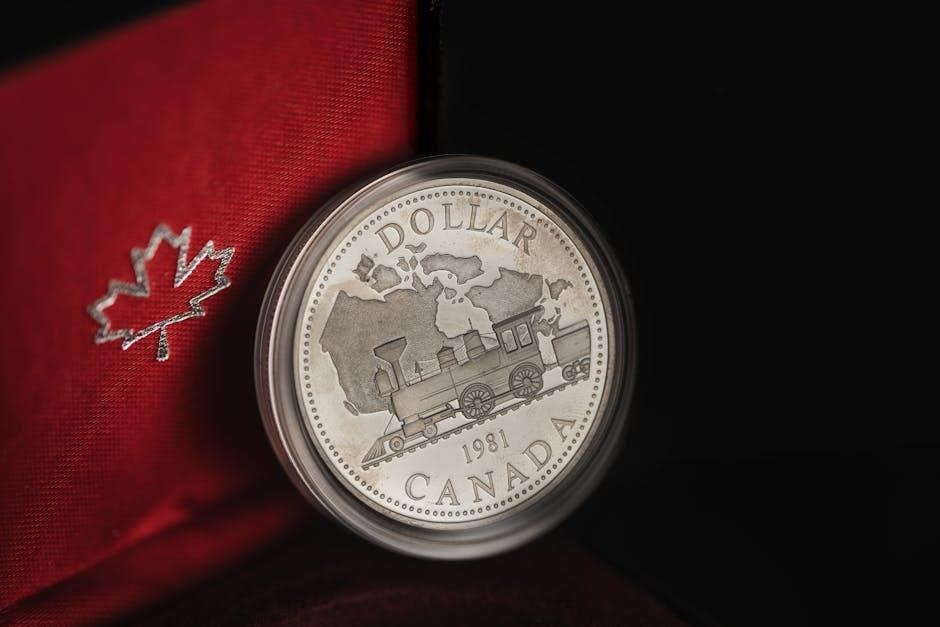
Future of Australian Coin Collecting
The future of Australian coin collecting is shaped by emerging trends in numismatics, with digital platforms and online resources like PDF checklists enhancing accessibility for new collectors. Innovations in coin design and limited editions, such as commemorative releases, continue to captivate enthusiasts, ensuring sustained interest in this evolving hobby.
Emerging Trends in Numismatics
Emerging trends in numismatics are transforming how Australian coin collectors engage with their hobby. The rise of digital platforms and online marketplaces has made it easier for collectors to access rare coins and connect with others worldwide. Downloadable resources, such as PDF checklists and catalogs, provide detailed information on coin collections, enabling collectors to make informed decisions. Additionally, the increasing popularity of commemorative and limited-edition coins, such as those celebrating anniversaries or events, adds excitement to the field. These trends not only enhance accessibility but also foster a sense of community among collectors, ensuring the continued growth and evolution of Australian coin collecting.
